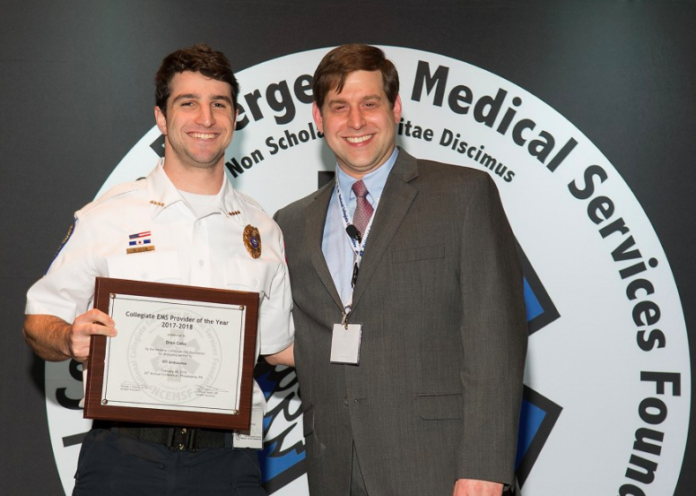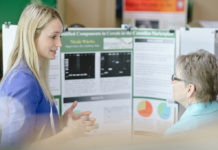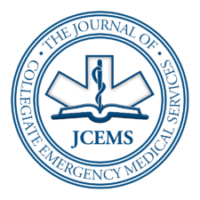Oren Cohn was honored by the National Collegiate Emergency Medical Services Foundation (NCEMSF) as the 2018 Collegiate EMS Provider of the Year. As the Chief of Operations of Rochester Institute of Technology (RIT) Ambulance, Chief Cohn was cited for his exceptional leadership and dedication to emergency management and disaster preparedness. JCEMS Executive Editor Brittany J. Dingler offers an exclusive interview with RIT’s visionary student-leader.
Why did you decide to pursue EMS? Was EMS a factor in choosing which college to attend?
My dad was very involved as a volunteer firefighter and EMT when I was a little kid; a few faint memories of calls I tagged along on have always kept me interested in the field. When I was 15, I joined my local fire department as a junior corps member. The fire house ran a BLS ambulance and, although junior corps members weren’t allowed on the ambulance, I still learned a lot of EMS knowledge. I knew I wanted to keep volunteering in college, which factored into my decision to attend Rochester Institute of Technology (RIT). I’m really glad I went to a school with an EMS agency – it turned into the central point of my collegiate experience.
What strategies or incentives do you use to motivate your agency?
One of the most effective ways to motivate an agency is to create self-motivation among members by showing them they belong and have a specific purpose in the agency. As a chief, I listen to everyone’s ideas and do my best to give members leadership opportunities, both on-call and in the agency administration. These opportunities also shape them into future leaders in other settings.
“I listen to everyone’s ideas and
do my best to give members leadership opportunities,
both on-call and in the agency administration.”
Additionally, EMS agencies are experiencing a lack of volunteerism around the country, so it is important for EMS leaders to boost and maintain recruitment and retention rates. Part of retaining members is preventing provider burnout. The biggest culprit for burnout in RIT Ambulance was the weekend overnight shifts and event standbys, both of which were typically covered by only a handful of people. To combat this problem, we created a weekend shift rotation which not only reduced provider burnout but helped ensure shift coverage. One of my main goals as chief was to increase our call coverage in order to better serve our campus and local communities. Greater coverage was partly achieved by strengthening membership participation through shift rotations.
An additional change I made was utilizing a new response application for member cell phones to help coordinate day-time response: a time without scheduled shifts when most calls were traditionally not covered. Lastly, small incentives are very effective in ensuring that everyone is able to enjoy their time spent with the agency. We started providing meals to any member that worked standbys and gave the most active members priority in picking which standbys to work. Standbys started utilizing Incident Command Structure (ICS), which allowed members to become more familiar with the system and what to expect at large incidents. These initiatives resulted in standbys becoming more popular and easier for our agency to staff.
What is the most impactful program you and your agency created?
As chief of RIT Ambulance I had the opportunity to work with other local chiefs, county representatives, and RIT administrators. I brought large-scale training to our campus to teach the members new skills, and to have them work alongside their public safety counterparts. We hosted MCI and vehicle extrication drills, and were able to participate in Hazmat and structure fire drills. Working with other departments increased familiarity with RIT Ambulance, after which we saw an increase in mutual aid requests for RIT Ambulance to respond and assist other agencies. Hosting drills also facilitated the familiarity of our members with RIT Public Safety officers as well as local firefighters and paramedics, ultimately leading to increased efficiency on scenes.
These trainings became critical during three Hazmat calls and one structure fire on campus over the last academic year; these instances required multiple agencies to work together in order to quickly and effectively manage the complex scenes. The successful management of these incidents increased our positive reputation within the university community and the county. Therefore, as a result of the original trainings, RIT Ambulance has become a huge asset to the community and has provided members with more motivation to grow as leaders within the agency and in their own lives.
What are your future career goals? How has your collegiate EMS experience prepared you?
I’m currently pursuing a career in Emergency Management, in which I’m currently doing an internship. This field allows me to combine my passion for fire and EMS with leadership. Being a chief of a collegiate EMS agency gave me the opportunity to work with public safety professionals in my local county. As a college student at large incidents, for example, I was able to contribute to important conversations and make key decisions. I took leadership classes like ICS-300, which forced me to learn and increase my versatility at the command post. This learning opportunity enabled me to grow as a leader by offering critical lessons in resource management, and revealing how many people and agencies are involved in emergency management. I will use these lessons not only in my career but in my life. Working with people is an important skill – if you can do it well under pressure or in an emergency while managing EMS crews, you can do it in day-to-day operations.
How do you balance academics, EMS, and personal well-being?
It’s important for collegiate EMS leadership to stress that their agency members must always prioritize academics. We are all students first, and our main goal is to graduate. As a leader in RIT Ambulance, I always tried to demonstrate that if I could get good grades as the chief, everyone should be able to get good grades, because that’s what the chiefs before me did. I made it clear that it was not acceptable to skip class for calls or any agency-related business. I also held that standard for myself by never picking up shifts or calls the night before big tests. Most importantly to me, I got involved with an intramural athletic team, which helped me stay in shape and clear my mind of both EMS and classes. On top of all that, I always tried to get at least 6 hours of sleep nightly and consistently eat healthy meals. Overall, I was able to balance academic work, agency work, and personal well-being by setting time aside for each of those things everyday.









